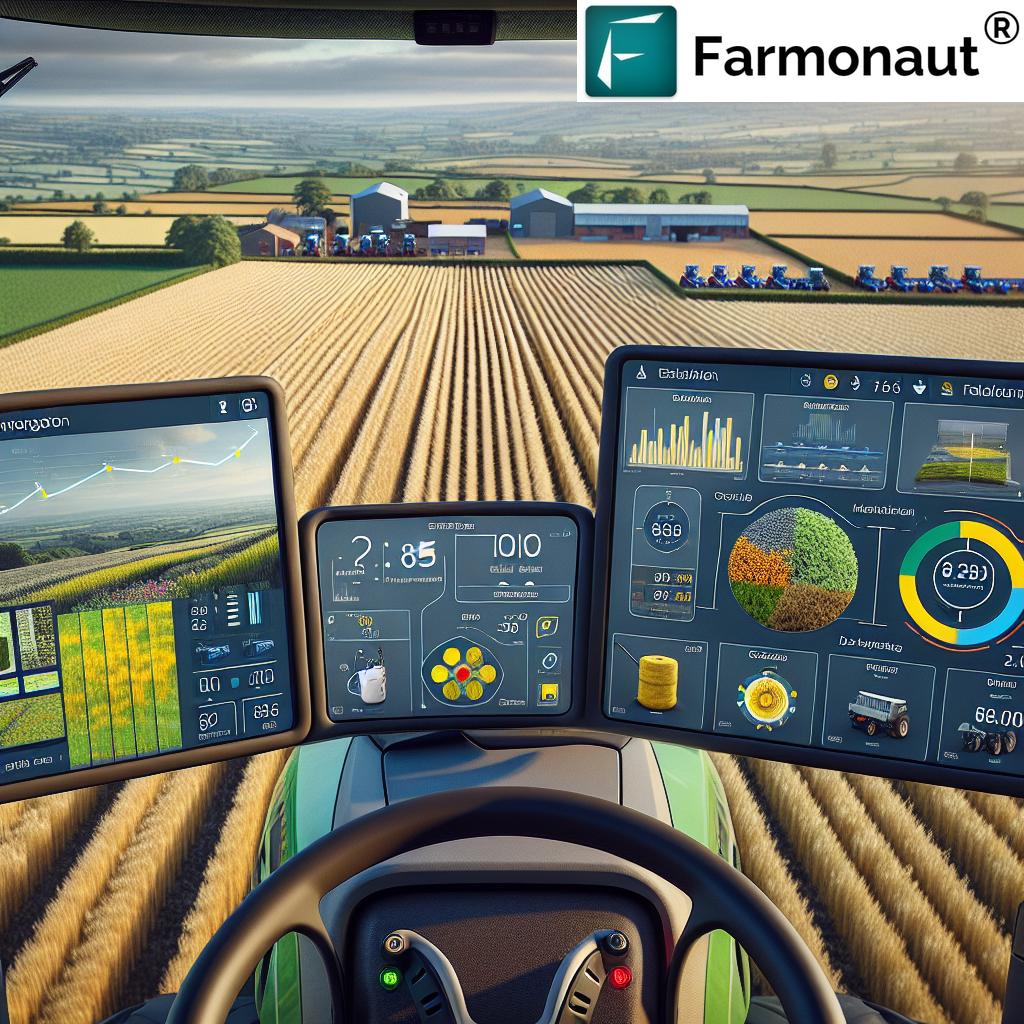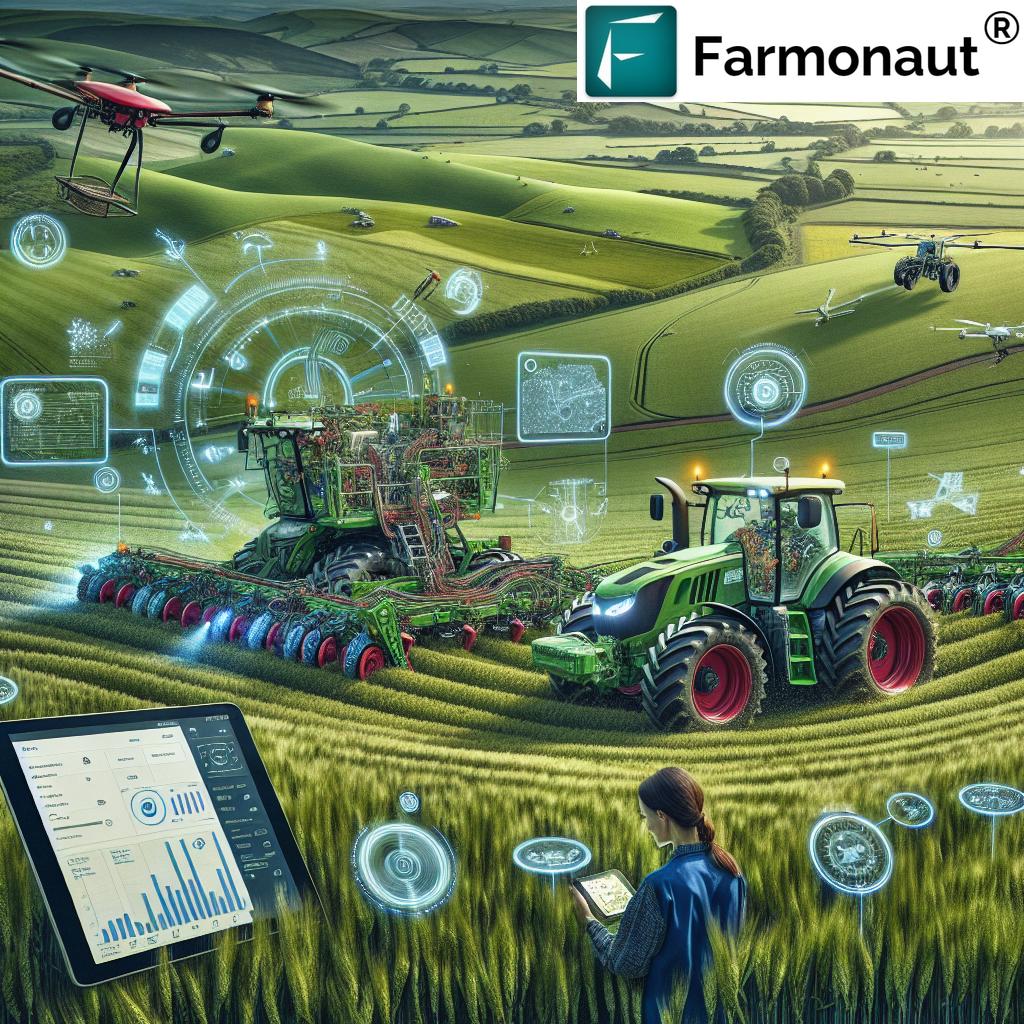UK Rapeseed Prices Surge: Global Grain Market Recovery and EU Import Trends Analyzed
“UK rapeseed prices have surged, with global grain markets showing recovery signs in just 20 words.”
Welcome to our comprehensive analysis of the current state of the agricultural commodity market, with a special focus on the surging UK rapeseed prices and the broader recovery trends in global grain markets. As experts in agricultural technology and market analysis, we at Farmonaut are committed to providing you with the most up-to-date and insightful information to help you make informed decisions for your farming operations.
The Rising Tide of UK Rapeseed Prices
In recent weeks, we’ve observed a significant uptick in UK rapeseed prices, a trend that has caught the attention of farmers, traders, and industry analysts alike. This surge is not occurring in isolation but is part of a broader recovery pattern in global grain markets. Let’s delve into the factors driving this trend and what it means for the agricultural sector.

Global Grain Market Recovery: A Closer Look
The global grain market has been showing promising signs of recovery, with several key indicators pointing towards a more robust and stable market environment. Here are some of the crucial factors contributing to this recovery:
- Increased Demand: As economies worldwide continue to rebound from the impacts of the COVID-19 pandemic, we’re seeing a resurgence in demand for grains and oilseeds.
- Weather Patterns: Favorable weather conditions in major grain-producing regions have led to improved crop yield forecasts, stabilizing supply concerns.
- Trade Relations: Easing of trade tensions between major agricultural nations has facilitated smoother international trade flows.
- Currency Fluctuations: Changes in exchange rates, particularly the weakening of the US dollar, have made grains more attractive to international buyers.
These factors collectively contribute to the positive momentum we’re observing in the grain markets, with ripple effects being felt across various commodities, including rapeseed.
UK Feed Wheat Futures: A Barometer of Market Health
UK feed wheat futures serve as an essential indicator of the overall health of the grain market in the region. Recent trends in these futures contracts have been particularly encouraging, reflecting the broader recovery we’re seeing in global markets. Here’s what you need to know:
- Price Movements: UK feed wheat futures have shown steady gains, with prices climbing to levels not seen in several months.
- Volume Increases: Trading volumes for these futures contracts have also risen, indicating growing interest and confidence among market participants.
- Forward Contracts: We’re observing an increase in forward contracting activity, suggesting that both buyers and sellers are more optimistic about future market conditions.
These trends in UK feed wheat futures not only provide valuable insights into the domestic grain market but also offer a glimpse into the broader European and global market dynamics.
EU Oilseed Imports: Shaping Market Dynamics
The European Union plays a crucial role in the global oilseed market, and its import trends significantly influence prices and market dynamics. Let’s examine the current state of EU oilseed imports and their impact on the market:
- Import Volumes: Recent data shows a notable increase in EU oilseed imports, particularly for rapeseed and soybeans.
- Supply Chain Shifts: Changes in global supply chains, partly due to geopolitical factors, have led to new sourcing patterns for EU importers.
- Policy Influences: EU agricultural and trade policies continue to shape import trends, with a focus on sustainability and domestic production support.
These import trends are closely tied to the price movements we’re seeing in the UK rapeseed market, as well as the broader recovery in global grain markets.
The Crude Oil Connection: Impact on Agriculture
The relationship between crude oil prices and agricultural commodities is complex and multifaceted. As we analyze the current market trends, it’s crucial to understand how fluctuations in crude oil prices are influencing the agricultural sector:
- Production Costs: Changes in oil prices directly affect the cost of fuel for farm machinery and transportation, impacting overall production costs.
- Fertilizer Prices: Many fertilizers are petroleum-based, meaning oil price fluctuations can significantly affect input costs for farmers.
- Biofuel Demand: Oil prices influence the demand for biofuels, which in turn affects the demand for crops like rapeseed and corn used in biofuel production.
Recent OPEC production cuts have led to increased crude oil prices, creating a ripple effect across the agricultural commodity markets. This interconnectedness highlights the importance of monitoring global energy markets alongside agricultural trends.
“EU oilseed imports and OPEC production cuts are among 5+ factors influencing agricultural commodity prices globally.”
Agricultural Futures Trading: Navigating Market Complexities
Agricultural futures trading plays a pivotal role in price discovery and risk management for farmers and agribusinesses. In the context of the current market recovery, understanding the nuances of futures trading is more important than ever. Here are key points to consider:
- Volatility Management: Futures contracts provide a means to hedge against price volatility, offering a level of financial stability in uncertain markets.
- Price Indicators: Futures prices serve as important indicators of market sentiment and expectations for future supply and demand.
- Global Interconnections: The interconnected nature of global futures markets means that events in one region can quickly impact prices worldwide.
For UK farmers and traders, staying informed about futures market trends is crucial for making strategic decisions about planting, harvesting, and selling crops.

Coronavirus Effects on Agriculture: Lingering Impacts and Recovery
While many sectors are showing signs of recovery from the COVID-19 pandemic, its effects on agriculture continue to shape market dynamics. Here’s how the ongoing situation is influencing the industry:
- Labor Shortages: Some regions are still grappling with labor shortages due to travel restrictions and health concerns, affecting production and harvesting.
- Supply Chain Resilience: The pandemic has prompted a reevaluation of supply chain strategies, with a focus on building more resilient and diversified sourcing.
- Changing Consumer Behavior: Shifts in consumer preferences and buying habits, partly driven by the pandemic, continue to influence demand for various agricultural products.
As we navigate the post-pandemic landscape, these factors remain crucial considerations for understanding market trends and making informed decisions in the agricultural sector.
UK Agricultural Policy: Shaping the Future of Farming
The UK’s agricultural policy landscape is undergoing significant changes, particularly in the post-Brexit era. These policy shifts have important implications for farmers, market dynamics, and the broader agricultural sector:
- Subsidy Reform: The transition from the EU’s Common Agricultural Policy to the UK’s new Environmental Land Management scheme is reshaping financial support for farmers.
- Trade Agreements: New trade deals and negotiations are opening up both opportunities and challenges for UK farmers in international markets.
- Environmental Focus: Increased emphasis on sustainable farming practices and environmental stewardship is influencing production methods and market demands.
These policy changes are integral to understanding the current and future state of UK agriculture, including the rapeseed market and broader grain industry trends.
Technology in Agriculture: Driving Efficiency and Sustainability
At Farmonaut, we’re at the forefront of integrating cutting-edge technology into agricultural practices. The role of technology in shaping market trends and farming efficiency cannot be overstated. Here’s how technological advancements are influencing the industry:
- Satellite-Based Crop Monitoring: Our advanced satellite imagery technology allows farmers to monitor crop health in real-time, optimizing resource use and improving yield predictions.
- AI-Driven Analytics: Artificial intelligence and machine learning are revolutionizing data analysis in agriculture, providing deeper insights into market trends and crop management.
- Precision Agriculture: Technologies like GPS-guided machinery and drone surveillance are enhancing farming precision, reducing waste, and improving productivity.
These technological advancements are not only improving farm management but also contributing to more accurate market forecasts and sustainable farming practices.
Explore Farmonaut’s cutting-edge agricultural technology solutions:
Market Analysis: Price Trends and Projections
To provide a comprehensive overview of the current market situation, we’ve compiled a detailed analysis of price trends and projections for key agricultural commodities. This information is crucial for farmers, traders, and industry stakeholders in making informed decisions.
| Commodity | Current Price (GBP/tonne) | Price Change (%) | 3-Month Forecast | Key Influencing Factors |
|---|---|---|---|---|
| Rapeseed | 450 | +8.5% | Upward Trend | EU Import Trends, Biofuel Demand |
| Feed Wheat | 180 | +3.2% | Stable | Global Supply, Livestock Demand |
| Crude Oil (USD/barrel) | 75 | +5.0% | Slight Increase | OPEC Production Cuts, Global Demand |
| Soybeans | 380 | +2.8% | Moderate Increase | Chinese Imports, Weather Conditions |
| Barley | 160 | +1.5% | Stable to Slight Increase | Beer Industry Demand, Export Markets |
This table provides a snapshot of the current market situation, highlighting the strong performance of rapeseed and the overall positive trend in agricultural commodities. The interplay between these various commodities and influencing factors underscores the complex nature of agricultural markets.
The Role of Exchange Rates in Agricultural Markets
Exchange rates play a crucial role in shaping agricultural markets, particularly in the context of international trade. As we analyze the current market trends, it’s essential to consider how currency fluctuations are impacting prices and trade dynamics:
- GBP/EUR Exchange Rate: The relationship between the British Pound and the Euro significantly affects UK exports to the EU, a major market for British agricultural products.
- GBP/USD Exchange Rate: Fluctuations in the Pound-Dollar exchange rate influence the competitiveness of UK agricultural exports in global markets.
- Impact on Input Costs: Exchange rates also affect the cost of imported agricultural inputs, influencing production costs for UK farmers.
Understanding these currency dynamics is crucial for farmers and traders in navigating the global agricultural marketplace and making informed decisions about pricing and market strategies.
Sustainability and Carbon Footprint in Agriculture
Sustainability has become a central focus in agriculture, with increasing emphasis on reducing carbon footprints and adopting environmentally friendly practices. This shift is not only driven by environmental concerns but also by market demands and policy initiatives:
- Carbon Credits: The emergence of carbon credit markets is creating new opportunities for farmers to monetize sustainable practices.
- Consumer Preferences: Growing consumer demand for sustainably produced food is influencing market trends and pricing.
- Regulatory Environment: Evolving environmental regulations are shaping farming practices and market dynamics.
At Farmonaut, we’re committed to supporting sustainable agriculture through our advanced technologies. Our satellite-based monitoring systems help farmers optimize resource use, reduce waste, and minimize environmental impact.
Learn more about our API solutions for agricultural data:
Future Outlook: Projections and Considerations
As we look to the future of agricultural markets, particularly in the UK and EU, several key factors are likely to shape trends in the coming months and years:
- Climate Change Impacts: Ongoing climate changes may affect crop yields and shift traditional growing regions, influencing supply and demand dynamics.
- Technological Advancements: Continued integration of AI, IoT, and satellite technology in farming is expected to drive efficiency and productivity gains.
- Global Trade Dynamics: Evolving international trade relationships and agreements will continue to impact market access and pricing strategies.
- Consumer Trends: Shifting consumer preferences towards healthier, more sustainable food options may influence crop demand and production focus.
Farmers and industry stakeholders should remain vigilant and adaptable to these changing conditions to capitalize on opportunities and mitigate risks in the evolving agricultural landscape.
Conclusion: Navigating the Complex Agricultural Landscape
The surge in UK rapeseed prices, coupled with the broader recovery in global grain markets, signals a dynamic and evolving agricultural landscape. As we’ve explored in this comprehensive analysis, numerous factors are at play, from international trade dynamics and policy changes to technological advancements and sustainability concerns.
For farmers, traders, and industry stakeholders, staying informed and adaptable is key to success in this complex environment. Leveraging advanced technologies, like those offered by Farmonaut, can provide crucial insights and competitive advantages in managing crops, predicting market trends, and optimizing farm operations.
As we move forward, the interplay between global economic factors, environmental considerations, and technological innovations will continue to shape the future of agriculture. By staying attuned to these trends and embracing data-driven decision-making, the agricultural sector can navigate challenges and capitalize on opportunities in this ever-changing landscape.
FAQ Section
Q1: What are the main factors driving the surge in UK rapeseed prices?
A1: The surge is driven by a combination of factors including increased global demand, favorable weather conditions, changes in EU import trends, and the broader recovery in global grain markets.
Q2: How does crude oil price affect agricultural commodity prices?
A2: Crude oil prices impact agriculture through production costs (fuel for machinery), fertilizer prices, and biofuel demand, which affects crops like rapeseed used in biofuel production.
Q3: What role does technology play in modern agriculture?
A3: Technology, such as satellite-based crop monitoring and AI-driven analytics, plays a crucial role in improving farm efficiency, predicting market trends, and promoting sustainable practices.
Q4: How are Brexit and new UK agricultural policies affecting farmers?
A4: Brexit and new UK policies are reshaping subsidy systems, trade relationships, and environmental regulations, creating both challenges and opportunities for UK farmers.
Q5: What is the outlook for agricultural markets in the coming months?
A5: The outlook is generally positive, with expectations of continued recovery in grain markets. However, factors like climate change, global trade dynamics, and technological advancements will play significant roles in shaping future trends.
















